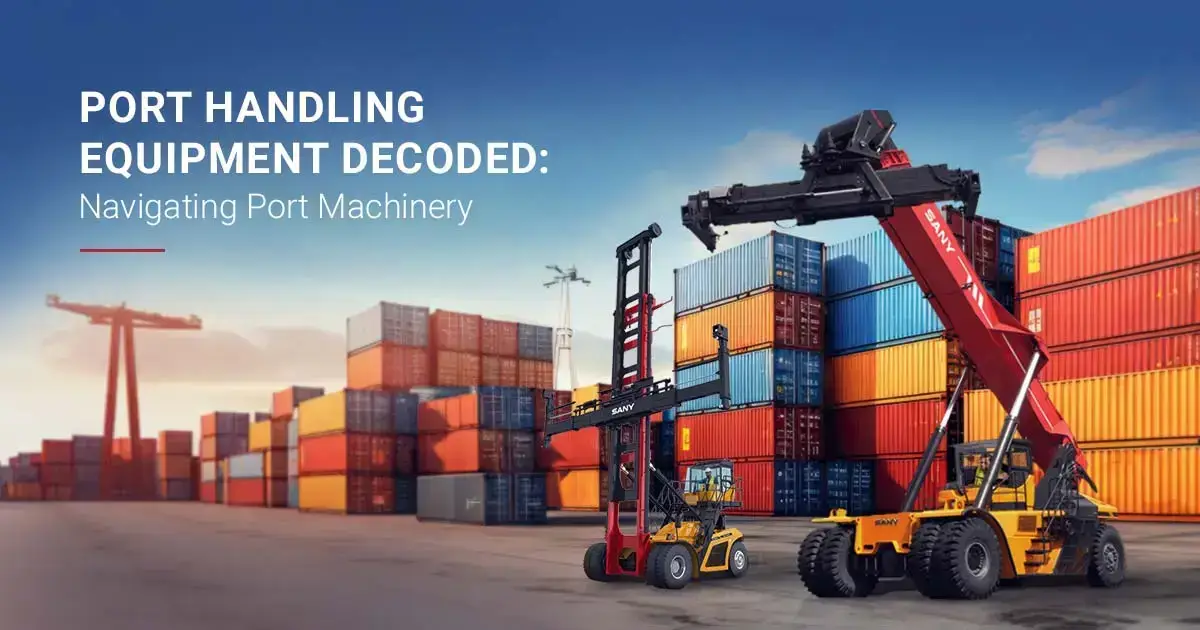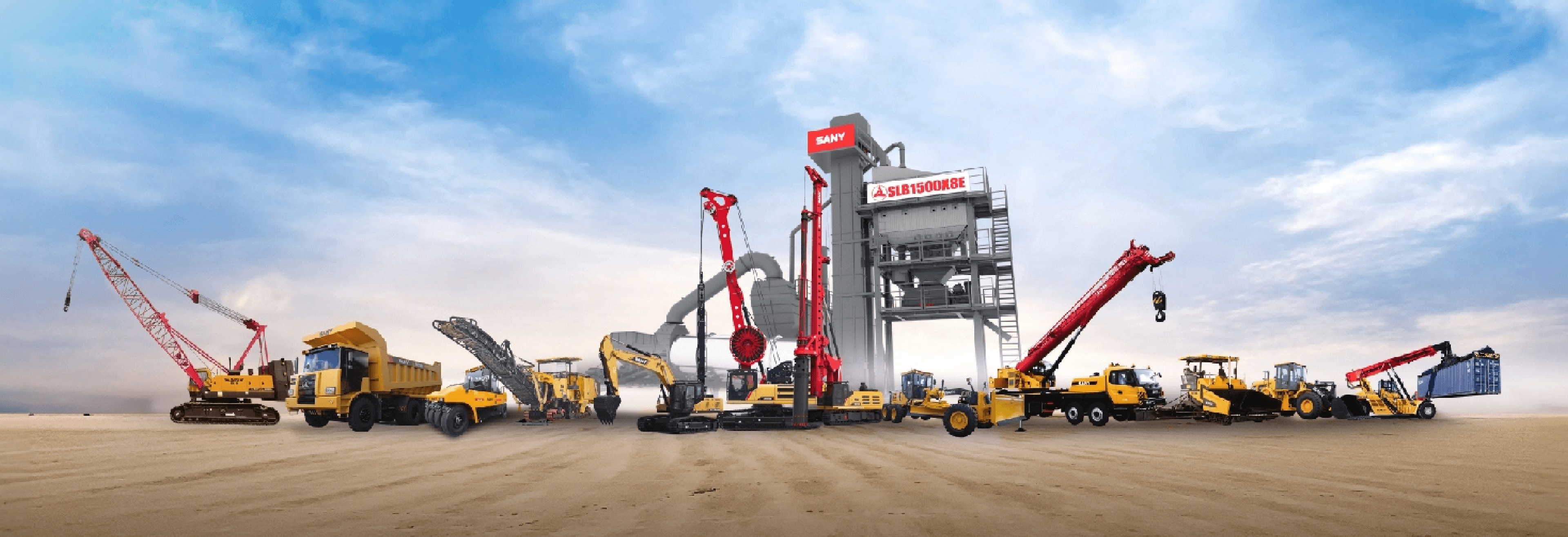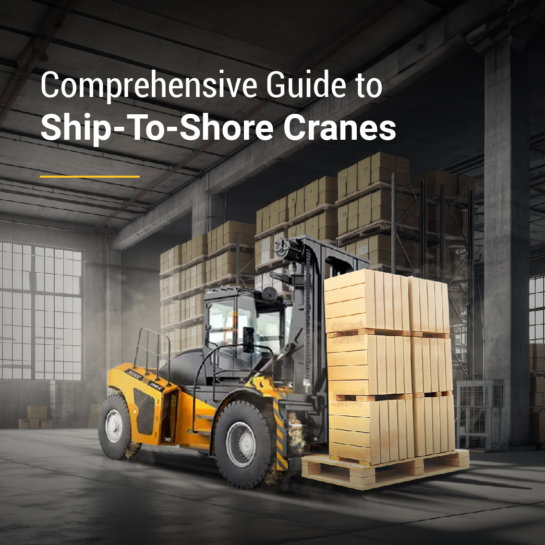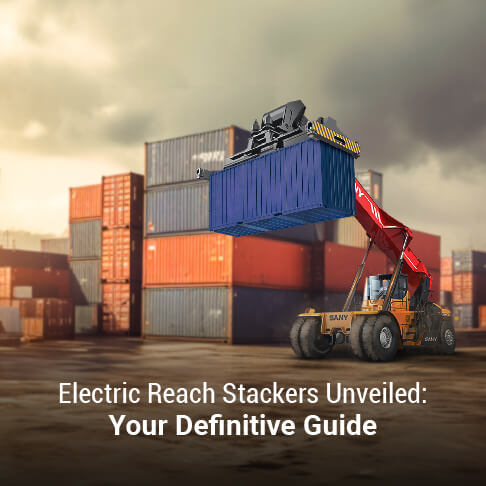Smooth Sailing with Port Handling Equipment: A Complete Guide
Category: Port Machinery | 11 April 2024

Port handling equipment plays a crucial role in the efficient operation of ports worldwide. Without efficient port machinery, the movement of goods in and out of ports would be significantly hindered, leading to delays, congestion, and increased costs throughout the supply chain. These specialised machines are essential for handling cargo, facilitating logistics, and ensuring smooth operations within port facilities. In this blog, we will explore the significance of port-handling equipment, its key functions and practical tips for operating different types of equipment.
What is Port Handling Equipment?
Port handling equipment refers to a range of machinery and vehicles designed to handle cargo at ports. These may include cranes, forklifts, reach stackers, straddle carriers, and more. Each type of equipment serves a specific purpose in the logistics chain, contributing to the seamless movement of goods in and out of ports.
Critical Functions of Port Handling Equipment
The critical functions of port machinery are essential for the smooth operation of ports and the efficient movement of goods. Here are some key functions:
Loading and Unloading
Port handling equipment, such as cranes and forklifts, is responsible for efficiently loading and unloading cargo from ships, trucks, and trains. This process is crucial for ensuring timely delivery and minimising delays in the supply chain.
Storage and Stacking
Once the cargo is offloaded, port handling equipment like reach stackers and straddle carriers play a vital role in organising and stacking containers in port yards. Proper storage and stacking techniques optimise space utilisation and facilitate easy access to containers when needed.
Transportation
Terminal tractors, trailers, and other transport vehicles move cargo within the port area. These vehicles transport containers from the storage yard to loading areas, warehouses, or transportation hubs, ensuring that goods are efficiently routed to their destinations.
Maintenance and Repairs
Port handling equipment requires regular maintenance to ensure optimal performance and prevent breakdowns. Maintenance vehicles and tools are used to inspect, repair, and service equipment, minimising downtime and maximising operational efficiency.
Safety and Security
Port handling equipment is used to ensure the safety and security of both personnel and cargo. Equipment operators must adhere to strict safety protocols to prevent accidents and injuries, while security measures such as surveillance cameras and access control systems help safeguard against theft and unauthorised access.
Environmental Considerations
Modern port handling equipment is increasingly designed with environmental sustainability in mind. Electric-powered equipment and emission-reducing technologies help minimise the environmental impact of port operations, reducing air and noise pollution in port areas and surrounding communities.
Practical Tips for Operating Different Types of Port Handling Equipment
Practical tips for operating different types of port handling equipment are crucial for promoting safety, efficiency, and compliance in port operations. By following these tips, operators can contribute to the smooth and successful operation of ports. Here are some practical tips for operating different types of port handling equipment:
- When operating cranes, adhere to safety protocols and load capacity guidelines to prevent accidents and ensure efficient lifting operations.
- Conduct regular inspections of forklifts for signs of wear or damage, and operate with caution, especially when handling heavy or oversized loads.
- Familiarise yourself with the controls and stability of reach stackers before operation, and use proper stacking techniques to maximise efficiency and safety.
- Maintain proper balance and stability when manoeuvring straddle carriers, adhering to weight limits and avoiding overloading the equipment.
- For terminal tractors and trailers, perform routine maintenance checks to ensure the proper functioning of brakes, lights, and steering mechanisms.
- Utilise appropriate lifting attachments and spreader bars when using cranes to lift and position heavy or irregularly shaped loads.
- Train operators on the specific handling characteristics of each type of equipment to optimise performance and minimise the risk of accidents.
- Implement a clear communication protocol among equipment operators and ground personnel to coordinate movements and avoid collisions.
- Keep work areas clean and free of debris to prevent obstructions that could impede the operation of port handling equipment.
Conclusion
Port handling equipment forms the backbone of port operations, enabling the seamless movement of cargo and ensuring efficient logistics management. By understanding the critical functions and adhering to practical operating tips, port operators can enhance productivity, safety, and overall performance, ensuring smooth sailing in the bustling world of port logistics.
At Sany India, we take pride in being the leading enterprise specialising in the manufacturing of port handling and construction equipment. Our extensive lineup of port machinery encompasses a variety of essential equipment, including empty container handlers, forklift trucks with varying capacities, material handler cranes, reach stackers, ship-to-shore cranes, rubber tyre container gantry cranes, telehandlers, and many more. With over two decades of experience in the Indian market, we have successfully delivered over 25,000 machines on-site, making substantial contributions to infrastructure projects not only in India but also in neighbouring South Asian countries. Learn more about products here.



